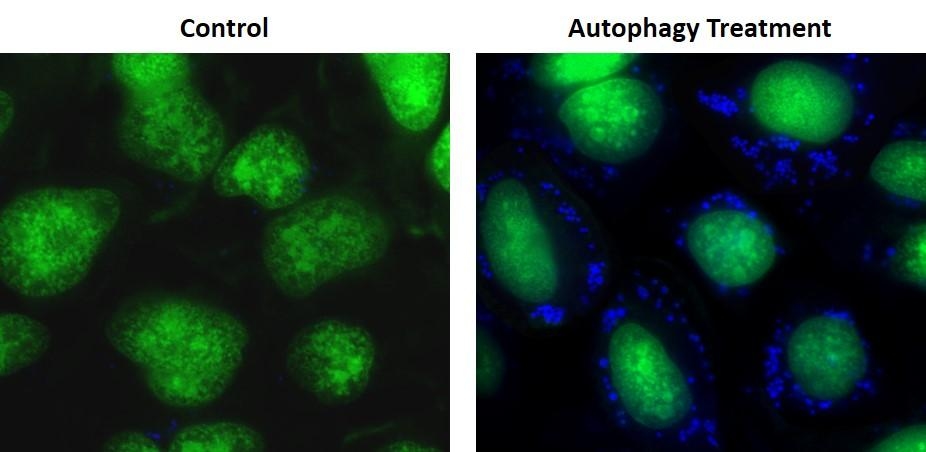Cell Meter™ Autophagy Fluorescence Imaging Kit
Autophagy is one of the major pathways for degradation of intracellular macromolecules in animal cells. The process of autophagy involves the sequestration of cytoplasmic materials and intracellular organelles in a membrane-bounded vacuole called autophagosome, the fusion of the autophagosome with lysosomes, and the subsequent degradation of sequestered materials. Cell Meter™ autophagy fluorescence imaging kit employs Autophagy Super Blue™ as a specific autophagosome marker to analyze the activity of autophagy. The assay is optimized for direct detection of autophagy in both detached and attached cells. The kit provides all the essential components for the assay protocol. The Cell Meter™ autophagy fluorescence imaging kit is optimized for fluorescence microscope. It gives much higher selectivity than other commercially available autophagy probes.


| Catalog | Size | Price | Quantity |
|---|---|---|---|
| 23001 | 200 Tests | Price |
Storage, safety and handling
| H-phrase | H303, H313, H333 |
| Hazard symbol | XN |
| Intended use | Research Use Only (RUO) |
| R-phrase | R20, R21, R22 |
| UNSPSC | 12352200 |
Instrument settings
| Fluorescence microscope | |
| Excitation | DAPI filter |
| Emission | DAPI filter |
| Recommended plate | Black wall/clear bottom |
Documents
Contact us
| Telephone | |
| Fax | |
| sales@aatbio.com | |
| International | See distributors |
| Bulk request | Inquire |
| Custom size | Inquire |
| Technical Support | Contact us |
| Request quotation | Request |
| Purchase order | Send to sales@aatbio.com |
| Shipping | Standard overnight for United States, inquire for international |
Page updated on December 26, 2025
